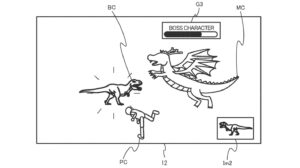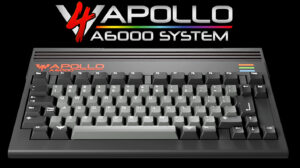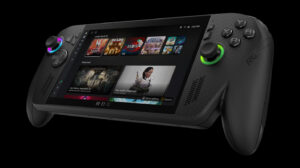PlayStation 5 Designers Break Down What’s Inside The Console

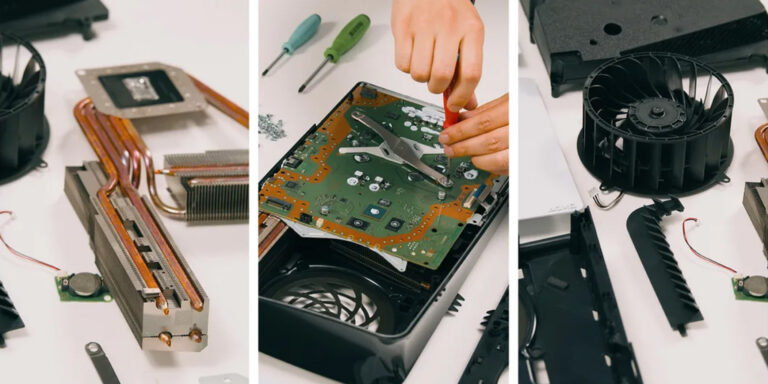
PS5 gamers who have always wondered just what makes the console tick have now got a better idea, thanks to a recent blog post by two of its designers. Shinya Tsuchida, Mechanical Design Lead, and Shinya Hiromitsu, Electrical Design Lead, offered insights into the Pro console, with reference to previous models.
Among the highlights are the use of liquid metal, new airflow fans, and screws to suppress electromagnetic noise. The PS5 Pro was released in November 2024, and built upon the design of the first PS5 from 2020, and its most recent update from 2023.
“One characteristic of PS5 consoles is that they leverage liquid metal with excellent thermal conductivity for the TIM (Thermal Interface Material) of its main processor,” said Tsuchida.
“If you look closely at the surface of the current PS5 model’s motherboard, you can see the traces that connect the SoC and RAM,” Hiromitsu added.
“However, on the PS5 Pro’s board, the traces are barely visible on the surface. This is because the PS5 Pro’s motherboard was designed with additional internal layers, which allows signal traces to be routed more efficiently through the inner layers achieving even faster memory performance.”
For The Fans
Sony and Microsoft are both known for revealing the components of their consoles, but not every games company follows suit. Nintendo are still keeping quiet on what exactly lies inside its Switch 2, leading to questions of compatibility with its predecessor.
Meanwhile, Tsuchida and Hiromitsu took great pains to explain the differences, and improvements, between the PlayStation 5 Pro and previous versions. For example, Tsuchida highlighted how the fan design has evolved.
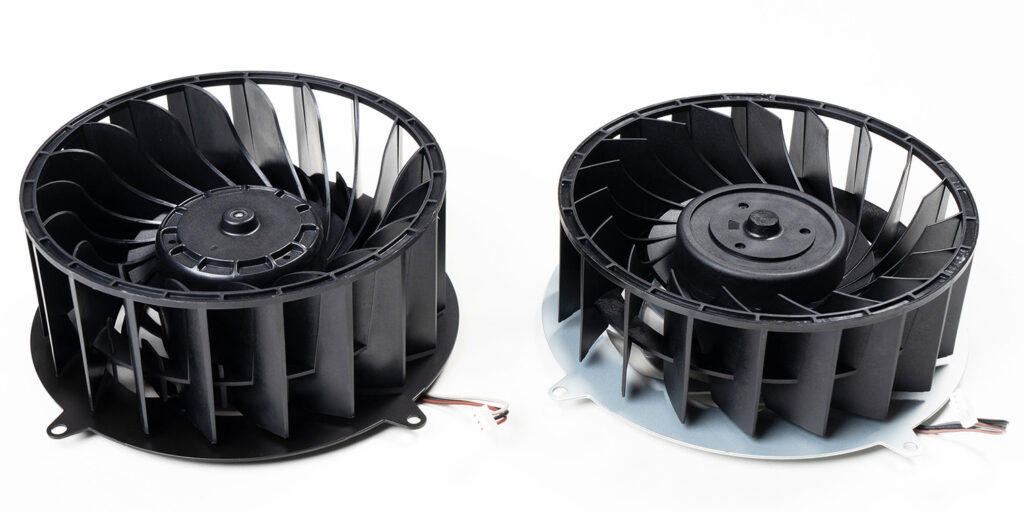
“The two fans have the same number of blades, but our teams re-designed the blade shape for further optimization. If you look closely, you can see that there are even smaller blades in between each blade.”
“Generally speaking, if a fan has good airflow efficiency, it’s considered better and higher performing. However, we designed our fans to be more than that. We wanted our fans to produce more air “quietly.” It may be generally acceptable for fans to be louder as long as it’s creating more airflow, but this isn’t the case for game consoles as it can disrupt the gameplay experience. I think this specific design philosophy is unique to PlayStation consoles.”
Nuts And Bolts
The engineers explained that, once a person removes the Pro’s outer shell they’ll find a metal shield secured to the motherboard with a significant number of screws. As opposed to doing this for sturdiness, they serve an unusual purpose.
“Most components on the mainboard generate electromagnetic noise. Since this noise can interfere with nearby electronic devices, such as smartphones, and potentially disrupt their operation, we must suppress the amount of electromagnetic emissions to be kept below a certain threshold,” Tsuchida said. “The screws securing the shield are strategically placed to reduce electromagnetic interference.
AI-Assisted Graphics
Gamers who keep up with technology will know that current AMD and NVIDIA GPUs incorporate AI features. Hiromitsu outlined how the PlayStation 5 has its own onboard AI-assisted tech.
“The SoC (System-on-a-Chip) is the large chip you see on the center of the board. This chip handles the rendering of high-resolution, high-frame-rate graphics, including the PlayStation Spectral Super Resolution (PSSR), which uses AI-enhanced resolution for ultra-high-definition gameplay.”
“To maximize the performance of the SoC, the power delivery lines have also been enhanced compared to the current PS5.” he added.
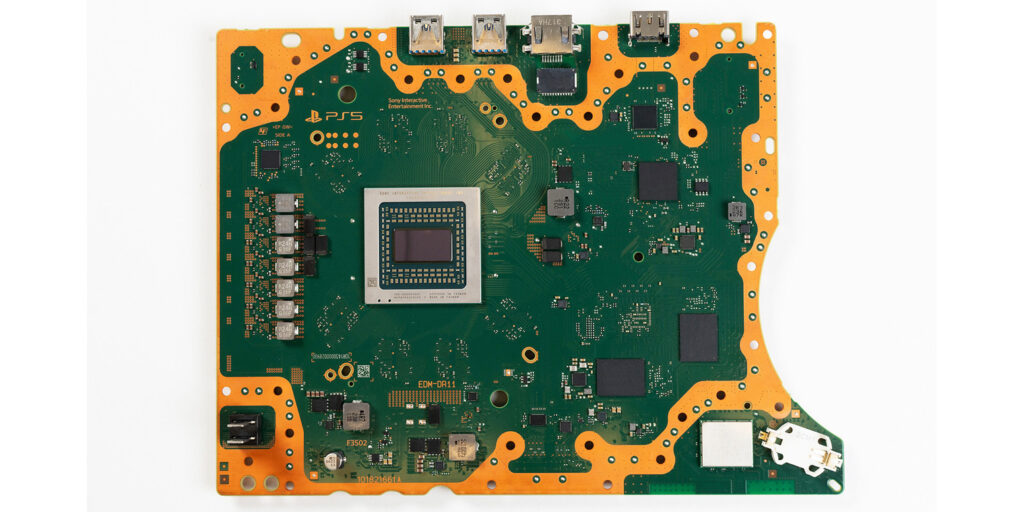
Hiromitsu also spoke about the memory upgrades between the current PS5 and the Pro. Current non-Pro consoles have eight high-speed GDDR6 chips for memory, which means the console can render games at high speed and also handle the low-speed processing for the remaining operating system settings.
“In the PS5 Pro, we added a ninth DDR5 memory which is dedicated to the slower processing, while the remaining eight GDDR6 memories handle all the high-speed rendering required for gameplay.”
The T-1000 of Games Consoles
Although there has been some concern among gamers about liquid metal leaking from PlayStation 5 consoles, these reports are few and far between. It’s been used inside all PS5s from the beginning, but for the Pro the engineers added extra stability.
“The basic structure remains the same in the PS5 Pro, but we made some improvements by adding fine grooves where the liquid metal is applied, so that the cooling effect is more stable,” Tsuchida said.
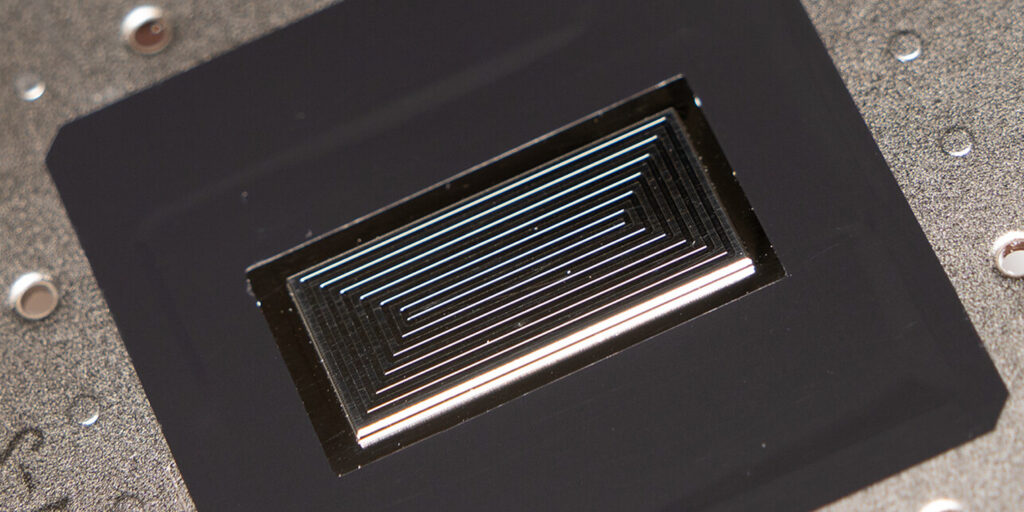
“When we were doing research for the original PS5, we anticipated that semiconductors would continue to advance and become much denser, so we believed liquid metal technology would become crucial. It turns out we were right, and it was integral when designing the PS5 Pro.”
Future-Proofing The PS5
It’s fair to say that tech companies incorporate planned obsolescence in their products, as this is a common business plan. However, Sony’s engineers tried to make their console relatively future-proof by incorporating tech that was cutting-edge at the time, before it even received a global rollout.
“Wi-Fi 7 is a new standard released in 2024, and we chose to adopt it for the PS5 Pro based on its high performance and future potential,” Hiromitsu said.
“During the development of the PS5 Pro, Wi-Fi 7 had not yet been officially released, which made the validation process quite challenging. But we were glad we were able to become early adopters for a gaming console when we got it certified in time for launch in regions that supported Wi-Fi 7.”



